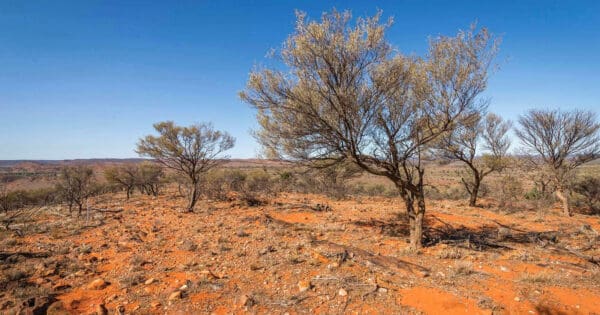Hike at a Glance
Max elevation: 243m
Min elevation: 211m
Total Ascent: 37m
Hike overview
Exploring the heart of Mutawintji National Park, the Mutawintji Gorge walking track promises a rewarding day hike. This challenging 6-kilometer trail winds through one of the park's most scenic gorges, leading you to a tranquil pool surrounded by towering red cliffs. The roundtrip journey typically takes between 3 and 3.5 hours, offering ample time to relax and soak in the beauty of the outback landscape.
Mutawintji Gorge walking track takes you on a hike through one of the park’s most scenic gorges. Enjoy a picnic at the end or simply spend some time taking in the view. This unforgettable experience allows you to explore the park's spectacular rangelands and immerse yourself in the unique atmosphere of the Australian outback.
Tips
- Follow the white markers that lead the way along this walk.In wet weather, access within the park maybe closed, and the public roads are susceptible to weather closures. Please check with the park office before you head out.
- Remember to take your binoculars if you want to bird watch.
- Mutawintji National Park is best visited during spring. Daytime weather is pleasant and the nights are not yet too cold.
- Toilets and picnic facilities are located at the Homestead Creek campground.
Track grade
Grade 5 (Difficult) - Walks for the Most Experienced: Grade 5 represents the most challenging walking tracks on the AWTGS. These are only recommended for very experienced and fit walkers with specialised skills, including navigation and emergency first aid. Tracks are likely to be very rough, very steep, and unmarked. Walks may be more than 20 kilometers. These challenging walks demand a high level of fitness and experience to navigate difficult terrain, significant elevation changes, and potentially unformed paths.
Walk map and GPX file
Max elevation: 243 m
Min elevation: 211 m
Total climbing: 37 m
Total descent: -38 m
Content use
Please don’t copy GPX files or content from this site to AllTrails or other platforms. Each trail has been personally mapped, documented, and refined to support Australia’s bushwalking and hiking community. While some details come from land managers, every listing reflects significant personal effort. This is a free, community-driven initiative—your respect helps keep it that way.
Gallery
Got any photos from this hike? Your photos can help others plan. Share shots from along the trail so fellow hikers know what to expect.
Click to add your photos >>
Getting there
Getting to the trailhead: Mutawintji National Park.
The Mutawintji Gorge walk is in the southern part of Mutawintji National Park. Upon entering the park, you’ll pass the visitor centre, take the right fork and follow the road to the end – you might like to stop in at the visitor centre for a map. Road quality Check the weather before you set out as the road to the Mutawintji Gorge walk is unsealed. Parking Parking is available at the start of the Mutawintji Gorge walk.
Accessing Mutawintji National Park: Mutawintji National Park is approximately 130 kilometers northeast of Broken Hill. The journey is via an unsealed gravel road, typically well-maintained in dry weather. However, heavy rain can cause closures. Always check road conditions with local authorities before venturing out. Drivers from Broken Hill have two route options: follow the Silver City Highway towards Tibooburra, keeping an eye out for the well-marked Mutawintji National Park turnoff. Alternatively, take the Barrier Highway for 75 kilometers before turning onto the designated park access road.
Upon arrival at the park, Mootwingee Road serves as the main entry point. Parking options include Homestead Creek campground and picnic area. While two-wheel drive (2WD) vehicles can access the park, remember these are unsealed roads. Extreme weather conditions can significantly impact road quality. Park access is restricted to dry weather only, as heavy rain can make the unsealed roads impassable.
Need a rental car to get you to the hike? Find one here.
About the region
In the rugged outback of New South Wales, Mutawintji National Park offers a uniquely Australian experience. This ancient landscape, northwest of Broken Hill, boasts a rich Aboriginal heritage spanning millennia. Evidence of their presence can be found throughout the park, from significant cultural sites to famous hand stencil art adorning the vibrant red cliffs of the Bynguano Ranges.
Mutawintji National Park showcases the classic Australian outback. Explore a network of red dirt roads, winding through dramatic gorges and vast deserts. The ever-changing hues of the Bynguano Ranges paint a majestic backdrop, while the expansive saltbush and mulga plains stretch endlessly towards the horizon, offering a true escape from the hustle and bustle of city life.
The park holds deep cultural significance for the traditional owners, the Pantjikali, Wanyuparlku, Wilyakali and Malyangapa people. For thousands of years, Mutawintji has served as a crucial meeting place for Aboriginal communities, hosting gatherings of up to 1,000 people for ceremonies like initiations and rainmaking rituals.
An easy walk, suitable for wheelchairs, leads you to the splendor of Mutawintji's gorges and the rocky overhang known as Thaaklatjika (Wright's Cave). Here, captivating artworks – paintings, stencils, and engravings – depict the rich history of the area, showcasing both pre-colonial and colonial Aboriginal life alongside native animals like kangaroos and emus.
Despite its peaceful ambiance, Mutawintji is teeming with wildlife. Look out for soaring predators like wedge-tailed eagles and peregrine falcons. The air comes alive with the calls of noisy short-billed corellas, zebra finches, budgerigars, apostle birds, and magpies. Keep an eye out for slithering goannas and snakes, and don't miss the chance to spot members of the endangered yellow-footed rock wallaby – the largest and brightest-colored rock-wallaby in Australia, found only on the park's rocky ridges.
Begin your exploration at the Mutawintji Visitor Centre to gather valuable information and park permits. Choose from a variety of campsites, including Homestead Creek campground. Hiking options cater to all abilities, ranging from the easy Thaaklatjika Mingkana walking track to more challenging adventures like the Rockholes Loop walking track or Mutawintji Gorge walking track.
Find a place to stay
Wondering where to stay near this hike? Find accommodation close to the trailhead — hotels, cabins and campgrounds nearby. Click the button to view the interactive map.
Closest towns to this walk: Broken Hill, Ivanhoe, Menindee, Mutawintji, Pooncarie, Silverton, Tibooburra, White Cliffs, Wilcannia
Let someone know
Heading out? Fill in a trip intentions form so someone knows your plans. If things go wrong, they can raise the alarm fast, giving you peace of mind on the trail.
Similar walks nearby
Looking for more walks in or near Mutawintji National Park? Try these trails with a similar difficulty grade.
Suggest an edit
Notice something different about this trail? Whether it’s a new feature, a route change, or a closure, share your update so we can keep our info accurate and helpful for fellow hikers.
Click to suggest edits >>
Explore safe
Plan ahead and hike safely! Carry enough water, pack layers for changing conditions, and bring safety gear like a torch, PLB, and reliable communication device. Check official sources for trail updates, closures, and access requirements, and review local weather and bushfire advice. Most importantly, share your plans with someone before you go. Being prepared makes for a safer and more enjoyable hike! Stay Safe, Explore More, and Always #ExploreSafe.
Packing checklists
What you carry in your pack depends on factors like weather, terrain, and your adventure type. Not sure what to bring? My free planning, food, and packing checklists are a great starting point, covering day hikes, overnight trips, and multi-day adventures. Use them to customise your kit and always prioritise safety.
Acknowledgement of Country
Trail Hiking Australia acknowledges the Traditional Owners of the lands on which we hike and pay respects to their Elders, past and present, and we acknowledge the First Nations people of other communities who may be here today.






